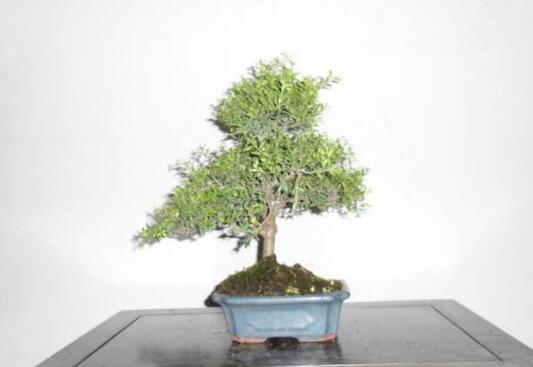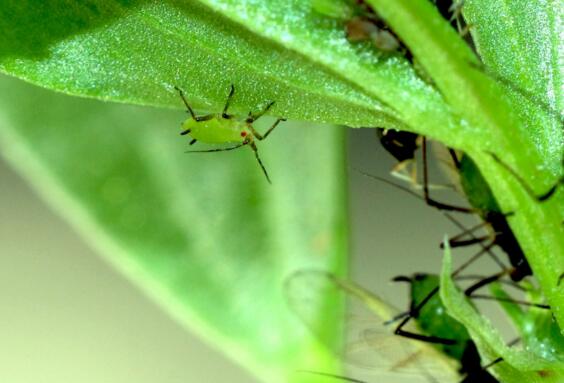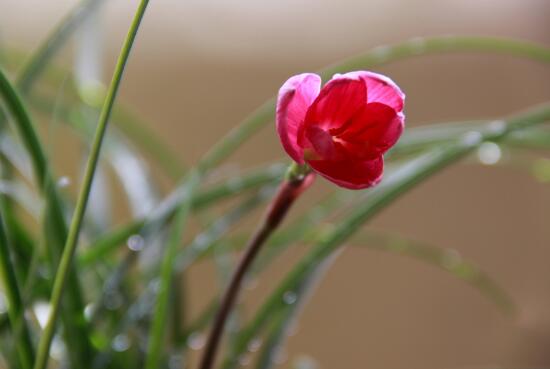What about the growth of Metasequoia glyptostroboides? pest control of Metasequoia glyptostroboides / 3 pests 1 disease
In the process of cultivating Metasequoia glyptostroboides, the last thing we want to encounter is the problem of diseases and insect pests, which do great harm to the plant, not only affect the beauty, but also cause death in serious cases. What about the metasequoia larvae? How to prevent and control diseases and insect pests of metasequoia? Next, the editor will take you to learn about it.
First, what about the metasequoia larvae? find the reason.

2. pest control of metasequoia glyptostroboides (pest)
1. Bark moth
This is an insect of the family Cerambycidae, which will eat into the stem of Metasequoia glyptostroboides during the larval stage, which will gradually lead to the death of its branches, resulting in its inability to blossom normally, and in serious cases, the whole plant will die.
Control method: when controlling the diseases and insect pests of this metasequoia, we can first prune the eaten branches, and then use 40% omethoate 100-200 times to spray the plant.
two。 Leaf wasp
This pest does great harm to Metasequoia glyptostroboides. It mainly feeds on the son of Metasequoia glyptostroboides and gradually eats its leaves until it runs out. Its magnets generally lay eggs on the branches, which will lead to the death of the branches.
Control methods: in the control of this metasequoia diseases and insect pests, we can adopt the most direct method, that is to directly use 1000-1500 times of fenitrothion EC to spray and kill it.
3. Leafhopper
Leafhopper, a pest that mainly threatens the leaves of Metasequoia glyptostroboides, will gradually absorb the sap in its leaves, resulting in massive loss of nutrients and withering. When this pest occurs on Metasequoia glyptostroboides, there will be many light spots on its leaves, which we can tell by this.
Control method: when controlling the diseases and insect pests of this metasequoia, we can use 1000 times of fenitrothion EC to spray the damaged plants, usually once every 5-7 days, and then completely eliminate this pest after 1-2 times.
III. Pest control of metasequoia glyptostroboides (diseases)
Rust disease
Rust is a disease that occurs in many plants, and Metasequoia glyptostroboides is no exception. this disease mainly threatens the leaves, stems and fruits of the plants. when the disease occurs, many blister spots will appear in the affected parts, and in severe cases, the blister spots will be dense and the plants will die quickly as a result.
Control method: in the prevention and control of this kind of metasequoia diseases and insect pests, we can use 20% verapamil EC 400 Mel 600 times liquid spray to spray metasequoia, usually about 15 days spray, 2-3 times can be cured.
What about the bugs of the newly married women? pest control of the newly married women / 3 insect pests 1 disease
In the process of raising newlyweds, the last thing we want to encounter is diseases and insect pests. This kind of problem is very harmful to the plant, which will not only affect its ornamental, but also lead to the phenomenon of plant withering and death in serious cases. What about the worms of the newlyweds? What should be done to prevent and control the diseases and insect pests of the bride? Next, the editor will take you to learn about it.
First, what about the bugs of the newlyweds? find the reason.
If you want to know what to do with the long bugs, we must first understand what kind of insects grow, so that we can deal with them pertinently, because the prevention and control methods of each kind of diseases and insect pests are different, and the details are described in detail below. No matter whether your bride has been disturbed by diseases and insect pests, we can understand it. After all, we can take precautions.
II. Prevention and control of diseases and insect pests in newly married women
1. Ground tiger
The ground tiger is a pest of Lepidoptera of the family Noctuidae, which has a high incidence of this pest every spring, so we should pay special attention to it in this season. This pest usually hides in the soil during the day and comes out at night to feed on the tender stems of the bride. If it is not treated for a long time, the plant will die.
Control method: when we deal with the disease and insect pest of this bride, we can use 80% dichlorvos or 50% phoxim with water and then irrigate the plant to kill this pest.
two。 Whitefly
Whitefly is a small herbivorous pest belonging to Hemiptera. It mainly harms the new buds, leaves and flowers of the bride. It will be inserted from the back of the leaves with piercing mouthparts, and then gradually suck up the juice. This leads to the loss of a large amount of nutrients in the plant, resulting in yellowing and wilting.
Prevention and control method: for this disease and insect pest of the bride, we can spray it directly with 1500 times EC, which can kill eggs, nymphs and adults.
3. Aphids
Aphids are one of the most destructive pests on earth, which are harmful to many plants, and the bride is one of them. The main damage of this pest is that adults and nymphs feed on leaves, stems, tender heads and tender panicle sap, resulting in a large loss of plant nutrients and wilting.
Control method: when we deal with this disease and insect pest, we can spray it with 3000 times of aldicarb wettable powder or 3000 times of 2.5% methomyl emulsion.
4. Powdery mildew
Powdery mildew is a disease caused by powdery mildew infection. Many white dust-like disease spots will appear on the leaves of the fallen bride at the time of the disease, and will gradually cover the whole leaf surface over time. As a result, the plant is unable to carry out photosynthesis and gradually wither and die.
Prevention and treatment methods: if we find the symptoms of powdery mildew on the plant, we must deal with it as soon as possible. during the treatment, we can use triadimefon 800 times liquid spray to treat the plant, usually once every 7-8 days. Generally, it can be cured after three consecutive sprays.
What about the leaf insects of laurel? disease and pest control of laurel / 2 insect pests and 3 diseases
Diseases and insect pests can be said to be the last problem that all plants want to encounter in the process of growth, and laurel is no exception. This kind of problem is very harmful to it, which not only affects its ornamental, but also causes it to die. What about the leaf worms of laurel? How does laurel's pest control need to be done? Next, the editor will take you to learn about it.
First, what about the leaf worms of laurel? find the reason.
If you want to know what to do with the leaf worms of laurel, we must first understand what kind of insects grow, so that we can deal with them pertinently, because the treatment methods of each kind of diseases and insect pests are different, and the details are described in detail below. Friends who are troubled in this respect can learn about it.
2. Disease and pest control of laurel (pest)
Red wax scale
Red wax scale is a kind of insect of the genus Homoptera. This pest mainly lives on the branches and leaves of laurel and absorbs the sap, which leads to the decline of plant growth, the shrinkage of tree crown and, in serious cases, the death of the whole plant.
Control method: if this pest appears on the laurel, at the initial stage, we should remove the insect or cut off the branches and leaves of many insects in time, and then centrally destroy it. If it is serious, 1500 times of the net EC of 20% planthopper can be used to directly spray the pest.
Spodoptera litura
The large coir moth is a kind of moth of the genus Lepidoptera. Its larvae will parasitize on the leaves of laurel and gradually bite its leaves and shoots, resulting in local baldness of tea bushes and, in serious cases, the death of the whole plant.
Control method: when we deal with this laurel pest, we can directly spray it with 1200 times of 90% Batan wettable powder or 1000 times of 50% fenitrothion EC.
3. Disease and pest control of laurel (disease)
Anthrax
Anthracnose is a disease that mainly threatens the leaves of laurel. At the initial stage of the disease, many brown spots will appear on the leaves, and with the passage of time, the spots will gradually expand and occupy the general area of the leaflets, making the plants unable to carry out photosynthesis and gradually withering and yellowing, and the leaves will gradually fall off.
Control methods: in the control of laurel diseases and insect pests, we can use 1000 times of methyl topiramate wettable powder to spray the diseased plants, usually spray once every 7-10 days, 2-3 times can be cured.
Black spot disease
Black spot is a disease caused by fungi, which mainly harms the leaves, petioles and shoots of laurel. During the disease, many purple-brown spots will appear in the affected parts, and with the passage of time, the spots will gradually expand, and the color will gradually change. Finally, the plant gradually withered.
Control methods: for this kind of laurel diseases and insect pests, we can use methyl thiophanate or carbendazim to spray the diseased plants, usually once every 7-10 days, 2-3 times can be cured.
Brown spot disease
Brown spot, also known as Rhizoctonia solani, is a fungal disease caused by Rhizoctonia solani. During the disease, many yellow-brown to light brown spots with a diameter of 0.1-0.5cm will appear on the leaves, and the disease spots will spread gradually with the passage of time, resulting in the phenomenon of plant death.
Prevention and control methods: when we find this kind of laurel diseases and insect pests, if the number of diseased leaves is relatively small, we can remove and destroy them in time. If there are more, we have to use 2000 times of 50% Sukeling liquid to treat them. Generally, the diseased plants are sprayed once a week and can be cured about 3 times.
- Prev

Prevention and treatment of diseases and insect pests, prevention and treatment of three insect pests and two diseases
Although Ziyunying is easy to breed, if you do not pay attention to the breeding methods, it is not only difficult to see purple flowers, but also may lead to plant death, because improper maintenance will make Ziyunying infected with diseases and insect pests. So what are the other common diseases and insect pests? Today, let's learn about the methods of pest control of Ziyunying.
- Next

What should we do if the leek lotus grows insects? pest control of leek lotus / green wax cicada spray dichlorvos
Leek lotus, heard the name thought is leek, in fact, it is a beautiful potted plant, loved by many people. In life, there are many people who raise leek lotus, but in the process of breeding, because of improper maintenance, leek lotus will cause disease and insect damage, thus affecting the ornamental. So, what should we do if the leek lotus grows worms?
Related
- Fuxing push coffee new agricultural production and marketing class: lack of small-scale processing plants
- Jujube rice field leisure farm deep ploughing Yilan for five years to create a space for organic food and play
- Nongyu Farm-A trial of organic papaya for brave women with advanced technology
- Four points for attention in the prevention and control of diseases and insect pests of edible fungi
- How to add nutrient solution to Edible Fungi
- Is there any good way to control edible fungus mites?
- Open Inoculation Technology of Edible Fungi
- Is there any clever way to use fertilizer for edible fungus in winter?
- What agents are used to kill the pathogens of edible fungi in the mushroom shed?
- Rapid drying of Edible Fungi

